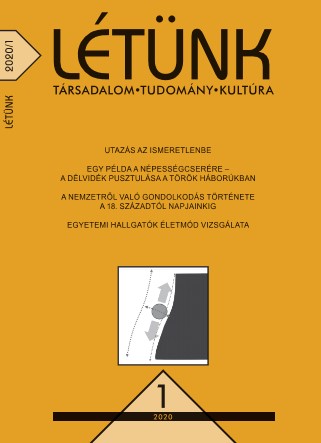EGY PÉLDAA NÉPESSÉGCSERÉRE A DÉLVIDÉK PUSZTULÁSAA TÖRÖK HÁBORÚKBAN
An example for the population exchange: The desolation of South Hungary in the period of the Turkish occupation
Author(s): Péter JuhászSubject(s): Local History / Microhistory, Military history
Published by: Fórum Könyvkiadó Intézet
Keywords: Turkish occupation; raids; campaigns; settlement history; population exchange
Summary/Abstract: Abstract: My study presents a case of the well-documented population exchanges in the turbulent history of the Carpathian Basin, which have well-documented sources and place names. Its aim is to provide an understanding of earlier similar processes of the Carpathian Basin (9th century, Hungarian conquest, Mongol invasion) and to present the similarities and differences by a well-documented population exchange. The examined area of southern Hungary can be divided into two groups. I present the population changes of the Banat of Temes, Szerém and Valkó counties, and for comparison the similar processes in Baranya, Tolna and Somogy counties. From the end of the 14th century onwards, the first group, which is directly situated on the Turkish frontier was affected by continuous raids and campaigns for three centuries. The continuous life of the population became impossible, and their population almost completely changed during this period. Already during the Hungarian rule the resettlement started from the area from Serbian areas south of the Sava and the Danube. The Southern Slavic settlers fled from the Ottoman rule. In contrast these on the west are the counties, where, with the exception of the Danube areas of Baranya and Tolna, the medieval settlement network and population have been largely preserved due to the rapid stabilization of Turkish rule and the consolidation of living conditions. The picture is somewhat different after the Peace of Drinápoly/Edirne (1568) in the Somogy County. Here, as a result of the constant frontier fighting, war became almost permanent, the former population could rather survive in the more secluded, protected areas. Fragments of the medieval Hungarian population remained in the very sparsely inhabited county. In conclusion, large-scale or complete population change can only be triggered by a longer-lasting state of war, such as in some regions of the 9th century Carpathian Basin or even during the Mongol invasion. Although the Hungarian Conquest resulted in significant population movements and settlements, there is no reason to suppose the mass destruction of the local population.
Journal: Létünk
- Issue Year: L/2020
- Issue No: 1
- Page Range: 7-30
- Page Count: 24
- Language: Hungarian

